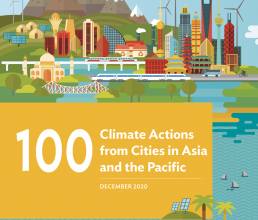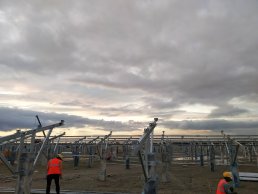First appeared in

Asian Development Bank
100 Climate Actions from Cities in Asia and the Pacific
Bangladesh has begun to transition away from its fossil fuel reliant energy system of the past, with the installation of a 35 megawatt (MW) solar plant southwest of the country’s capital city Dhaka.
Bangladesh has begun to transition away from its fossil fuel reliant energy system of the past, with the installation of a 35 megawatt (MW) solar plant southwest of the country’s capital city Dhaka.
Eighty-five kilometres southwest of Dhaka, Bangladesh’s densely populated capital city, is one of the country’s largest solar power plants, completed at the end of 2020. With 35 MW of power, the project is estimated to provide enough power for around 500,000 households and reduce carbon emissions by over 30,000 tons of CO₂ equivalent.
30K
TONS CO₂ SAVED ANNUALLY
In order to learn from this project as Bangladesh scales up its renewable energy capacity, the benefits to local communities will be reported on an ongoing basis. Lessons from this project, especially in terms of public-private partnerships may be applied elsewhere given the country’s renewable energy expansion.
The financing comprises a loan from ADB and a loan from the ADB-administered Canadian Climate Fund for the Private Sector in Asia II (CFPS II).

The government has set a target for renewable energy generation capacity of 10% of total power generation capacity by 2021 (photo by Spectra Solar Park Limited).
The Challenge
Dhaka is adversely affected by increasing gas supply shortages. While there are initiatives to promote solar power, developing grid-connected solar projects means overcoming hurdles of land acquisition and rights of way for transmission access.
Co-Benefits
Economic Electricity supplied from the solar power will increase the availability and reliability of power, thereby increasing industrial and agricultural productivity.
Social Green employment opportunities have been generated during the building and operation phases for the local community.

